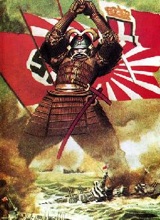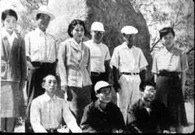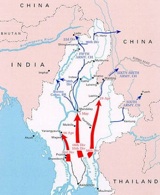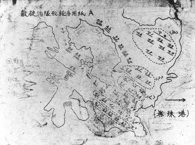Japanese Intelligence Successes in World War II
 Nakumuda Ken’ichi gulped. Was the rumor true? Ken’ichi thought he faced an American firing squad for intercepting their military communications during the Second World War. No, he did not break any American codes. Their technical questions dumbfounded him. Or so he said. For Ken’ichi was indeed an intelligence officer. His companions in the Imperial Japanese Navy (IJN) and Imperial Japanese Army (IJA) were just as deceptive and evasive during their interrogations. What were they hiding?
Nakumuda Ken’ichi gulped. Was the rumor true? Ken’ichi thought he faced an American firing squad for intercepting their military communications during the Second World War. No, he did not break any American codes. Their technical questions dumbfounded him. Or so he said. For Ken’ichi was indeed an intelligence officer. His companions in the Imperial Japanese Navy (IJN) and Imperial Japanese Army (IJA) were just as deceptive and evasive during their interrogations. What were they hiding?
Japan’s intelligence effort during the war included both spying and signals intelligence (SIGINT). Based at various diplomatic missions, Japanese intelligence officers, diplomats, and military attaches started with what they could gather openly. They clipped newspaper items, poured over technical journals, and queried commercial companies they had contact with. The American military issued press releases reporting which American Army divisions were involved in an operation. The Japanese used such information as a basis for building up an American order of battle.
{default}Intelligence could be as near as the mission’s windows. The Japanese consulate at Chita in the Soviet Union overlooked the Trans-Siberian railway; IJA intelligence officers monitored the Red Army build-up in the Russian Far East in the summer of 1945, carefully counting rails cars and noting their type.
Some operated as spies themselves. Naval Ensign Takeo Yoshikawa arrived in Hawaii in early 1941. Operating undercover, he spent his time studying and reporting on the American fleet at Pearl Harbor. Yoshikawa radioed his last message on December 5th, 1941, noting the state of the fleet and its lack of torpedo nets or barrage balloons.
 Others controlled networks of spies. Japanese spies so thoroughly penetrated the sector of the 17th Indian Division in Burma in December 1941 that the IJA was well aware of any move the division made.
Others controlled networks of spies. Japanese spies so thoroughly penetrated the sector of the 17th Indian Division in Burma in December 1941 that the IJA was well aware of any move the division made.
Japanese diplomats from Japan’s Ministry of Foreign Affairs also ran spy nets. The most diligent were in Portugal and Spain, where they provided information on Allied merchant ship movements.
Japan’s SIGINT effort found plenty of targets. The Japanese broke into a number of Western consulates starting in the 1930s and made copies of codebooks. The IJA cracked the British Foreign Ministry’s INTERDEPARTMENTAL code, which gave them information on the weaknesses of Fortress Singapore. The IJA had no trouble with the low level GRAY codes of the U.S. State Department, but they could also read the higher level BROWN code and the strip cipher. The IJA never shared its results or methods in breaking this strip cipher with the IJN.
Japan’s ability to read a number of Allied military and diplomatic codes played a role in Japan’s 1940 invasion of French Indo-China, today’s Vietnam, Cambodia, and Laos. Japan knew from reading Allied messages that they would not go to war with Japan over the matter. So Japan entered French Indo-China with full knowledge of what the reaction would be.
The IJA fought Nationalist China for a decade prior to Japan’s entry into the Second World War. Assisted by mathematicians, the IJA first cracked the Nationalists’ military code in the mid-1930s and continued to exploit Nationalist communications throughout the war. The IJA knew the strength of many Chinese Army divisions and their intentions. IJA code breakers knew the goals of a Nationalist offense in Burma in 1945 before it began.
The IJA also fought the Chinese Communists in sections of China, but the communists changed their code so often that the IJA could only read it sporadically.
Russia and Japan fought each other in the early 20th century in the Russo-Japanese War. They remained enemies with clashes periodically occurring along their border in Manchuria. The IJA cracked a Soviet Air Force code with the help of a Polish exile. They also broke a code used by Soviet Border Guards.
 The IJA focused on the Soviet Union for far too long, until 1943. Only then did they concentrate on the United States. They could decode some US Army traffic in the South Pacific Theater, but not quickly enough to be of any intelligence value.
The IJA focused on the Soviet Union for far too long, until 1943. Only then did they concentrate on the United States. They could decode some US Army traffic in the South Pacific Theater, but not quickly enough to be of any intelligence value.
The IJA broke US Army Air Force (USAAF) codes used in Burma and China. This code was created by a machine, so the Japanese obtained a similar machine manufactured in Sweden. Using it as a model, they cracked the code.
IBM punch card tabulators were used to break another USAAF code. The message traffic included B-29 mission information, but Japan’s air defenses were too weak to take advantage of the intelligence.
The IJN used ships such as the Iroo that cruised off the West Coast of the United States in the late 1930s and intercepted American Navy communications. The IJN intercepted Navy communications from a site in Mexico at the same time.
The Japanese military applied traffic analysis (TA) to encrypted radio transmissions that they could not decode. The American Merchant Fleet code served as a good indicator of American plans. By following where and when this code was being used, Japan knew approximately when and where American amphibious landings would occur.
Radio direction finding was also in the Japanese intelligence analysts’ bag of tricks. The Japanese could not read Soviet Army traffic, but their TA told them they were intercepting the radio transmissions of a Soviet rifle division based on "externals" such as the radio frequency and call sign. With a network of receiving stations, they used direction finding to locate the unit. That was enough for the IJA to monitor the Soviet Army build-up in the Russian Far East in the summer of 1945.
 Japan’s problems with the security of her codes in World War Two are well documented. The IJA-IJN rivalry extended to intelligence and they did not cooperate. Neither devoted many resources to signals intelligence. Analysis was poor at times, such as in grossly misjudging the magnitude of the Soviet build-up.
Japan’s problems with the security of her codes in World War Two are well documented. The IJA-IJN rivalry extended to intelligence and they did not cooperate. Neither devoted many resources to signals intelligence. Analysis was poor at times, such as in grossly misjudging the magnitude of the Soviet build-up.
Part of intelligence security is to hide "methods and sources," that is, how the information was obtained. Japan violated this basic rule by listing the source of the intelligence on its reports. Since the Allies could read many Japanese messages, they could learn of their own vulnerabilities, thanks to Japan identifying the source of information.
Japan also did a poor job of judging the reliability of sources. Japanese diplomats were notorious for passing along as intelligence what were just rumors. It happened so often that even the Japanese Emperor Hirohito complained about the practice.
White smoke rose from all Japanese missions in August 1945. With surrender near, Tokyo ordered the destruction of virtually all of their records. The diplomats dutifully carried out their orders and destroyed all their intelligence files. The IJA and IJN did the same. Very few Japanese intelligence files survived the war. Only a few intelligence officers ever talked or wrote memoirs. Most took their secrets to their graves.
Japan’s intelligence deficiencies during the war are known, but the lack of files, memoirs, and accurate interrogations obscure some of its victories. Exactly how much Nakumuda Ken’ichi and his fellow officers hid will never be known. Whatever it may have been, it was not enough to change the outcome of the war.
Ken’ichi later wrote a book about his work, Joho shikan no kaiso (Reminiscence of an intelligence officer), originally published in 1974.
This is the second of two parts on Axis intel successes in World War II. Click here to read part 1, German Intelligence Successes.
About the Author:
Hans Johnson is a freelance writer who lives in Florida.


A wealth of interesting detail, succinctly presented.
Could you write some material on:
1. Allied successful intelligence
2. Intelligence gathering and refinement in WW1 from both sides?
Were you aware of the fact that the Japanese navy bought the design blueprints for the Zero fighter from the estate of a man named Harry Williams? This design occured in the mid 1930’s after he and his partner Jimmie Wedell won a design competition for the USAAF and designated their aircraft the XP-34. After they both died in separate plane crashes and the contract was cancelled by the USAAF, Williams wife sold the design drawings to the highest bidder.
To be honest, the article is compiled confusingly. Starting mid sentences, and the author doesn’t make clear what he’s trying to say. It’s also lacking evidence and/or statistics, making me think the whole article is opinionated. I go to forums to read someone’s opinion!